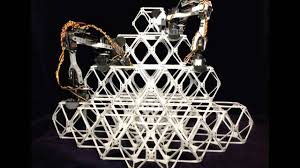
Breaking News
 Your body has a hidden reset button that most people never use.
Your body has a hidden reset button that most people never use.
 A Simple Way to Grow Fresh Greens Indoors
A Simple Way to Grow Fresh Greens Indoors
 Windows 10 is DEAD in 2025? -- Here's How I Run It SAFELY Forever (No Updates)
Windows 10 is DEAD in 2025? -- Here's How I Run It SAFELY Forever (No Updates)
Top Tech News
 HUGE 32kWh LiFePO4 DIY Battery w/ 628Ah Cells! 90 Minute Build
HUGE 32kWh LiFePO4 DIY Battery w/ 628Ah Cells! 90 Minute Build
 What Has Bitcoin Become 17 Years After Satoshi Nakamoto Published The Whitepaper?
What Has Bitcoin Become 17 Years After Satoshi Nakamoto Published The Whitepaper?
 Japan just injected artificial blood into a human. No blood type needed. No refrigeration.
Japan just injected artificial blood into a human. No blood type needed. No refrigeration.
 The 6 Best LLM Tools To Run Models Locally
The 6 Best LLM Tools To Run Models Locally
 Testing My First Sodium-Ion Solar Battery
Testing My First Sodium-Ion Solar Battery
 A man once paralyzed from the waist down now stands on his own, not with machines or wires,...
A man once paralyzed from the waist down now stands on his own, not with machines or wires,...
 Review: Thumb-sized thermal camera turns your phone into a smart tool
Review: Thumb-sized thermal camera turns your phone into a smart tool
 Army To Bring Nuclear Microreactors To Its Bases By 2028
Army To Bring Nuclear Microreactors To Its Bases By 2028
 Nissan Says It's On Track For Solid-State Batteries That Double EV Range By 2028
Nissan Says It's On Track For Solid-State Batteries That Double EV Range By 2028
Small assembler robots work together to build large structures

Researchers from MIT have created prototype assembly robots that can build small structures on their own or work together to create bigger ones.
The idea behind Benjamin Jenett's doctoral thesis is that, instead of producing components at separate locations and shipping them to a different manufacturing plant for final assembly, the whole thing could be constructed in the same place by small robots from a pool of identical pieces. These so-called Assembler Robots have been dubbed BILL-E (Bipedal Isotropic Lattice Locomoting Explorer) and could find applications in aircraft construction, bridge building and might even erect whole buildings from the ground up.
Working with Amira Abdel-Rahman, Kenneth Cheung (who now works for NASA's ARMADAS project that's looking at designing robots to build a lunar base) and Professor Neil Gershenfeld of MIT's Center for Bits and Atoms, Jenett has now reached the prototype stage of development.
The robots take the form of a hinged arm with grippers at either end to clamp onto three-dimensional blocks or units – called voxels – that are used to build the structures. These voxels serve as the construction equivalent of pixels in an image, with an object being built up one voxel at a time to create a complete structure.

 What MAGA is focused on
What MAGA is focused on Carbon based computers that run on iron
Carbon based computers that run on iron

